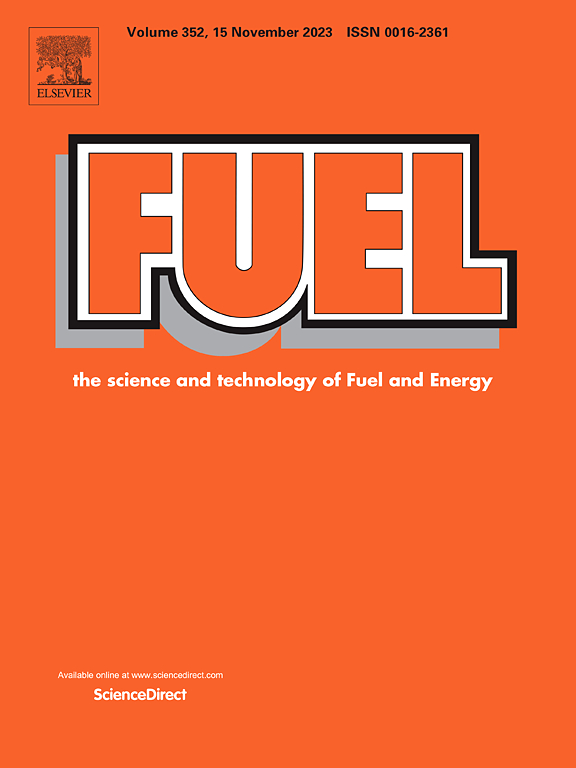Facile synthesis of mesoporous MFI crystals with multilamellar morphology and its application in catalytic cracking of 1-hexene
IF 6.7
1区 工程技术
Q2 ENERGY & FUELS
引用次数: 0
Abstract
Turning crystal morphology and size of zeolite materials is crucial for promoting their diffusion and catalytic properties. Herein, MFI hierarchical lamellar zeolites with tunable SiO2/Al2O3 ratios were synthesized under hydrothermal conditions through the self-assembly of commercially available simple surfactant and inorganic zeolite precursor. Through detailed investigation of the crystallization process using various characterization techniques, a reliable formation mechanism of hierarchical lamellar ZSM-5 zeolite was proposed. Cetyltrimethylammonium bromide (CTAB) acted both as a structure-directing agent and a mesoporogen, responsible for creating such structure. Hierarchical lamellar ZSM-5 can be successfully obtained by regulating the SiO2/Al2O3 ratios and crystallization temperature. In the 1-hexene cracking process, the hierarchical lamellar ZSM-5 zeolite exhibited significantly enhanced propylene selectivity and stability compared to conventional microporous ZSM-5. The enhanced textural and diffusion properties can effectively suppress the hydrogen transfer reaction, which plays a crucial role in determining the selectivity of C3-C5 olefins. These findings provide a facile and rational synthesis route to reduce diffusion resistance and enhance the catalytic performance of zeolite.

求助全文
约1分钟内获得全文
求助全文
来源期刊

Fuel
工程技术-工程:化工
CiteScore
12.80
自引率
20.30%
发文量
3506
审稿时长
64 days
期刊介绍:
The exploration of energy sources remains a critical matter of study. For the past nine decades, fuel has consistently held the forefront in primary research efforts within the field of energy science. This area of investigation encompasses a wide range of subjects, with a particular emphasis on emerging concerns like environmental factors and pollution.
 求助内容:
求助内容: 应助结果提醒方式:
应助结果提醒方式:


